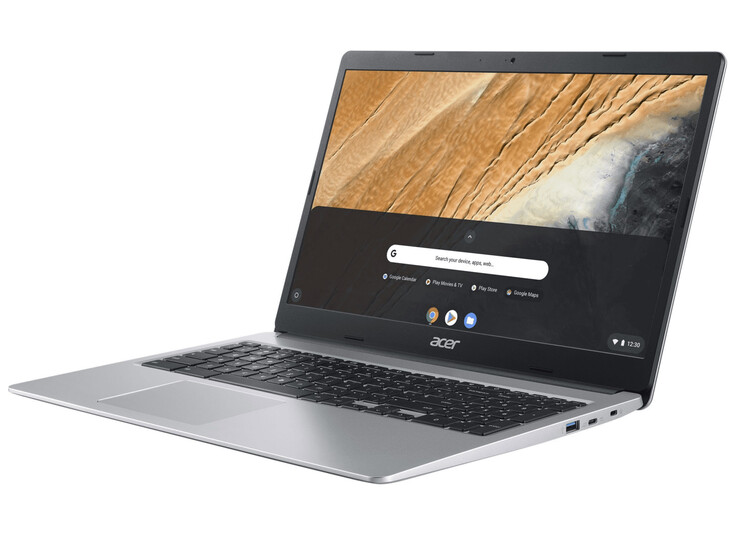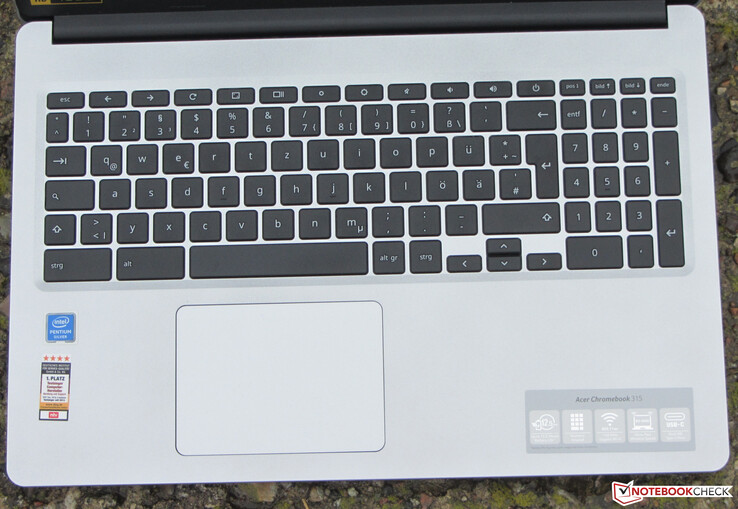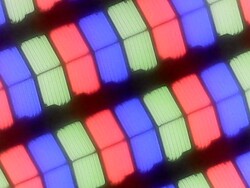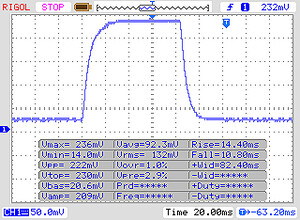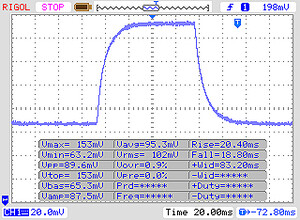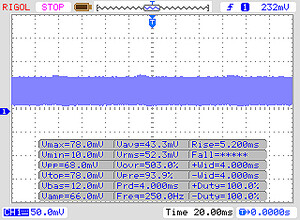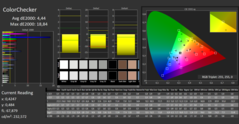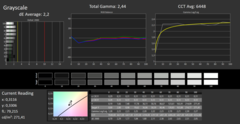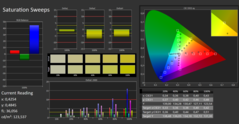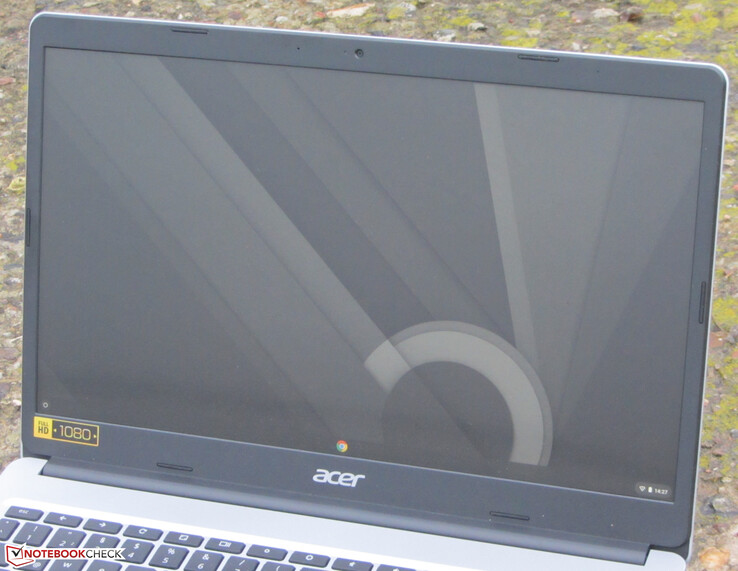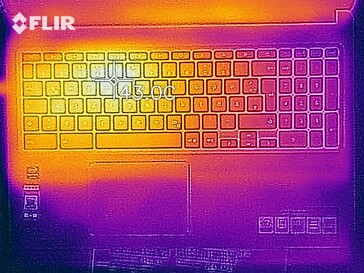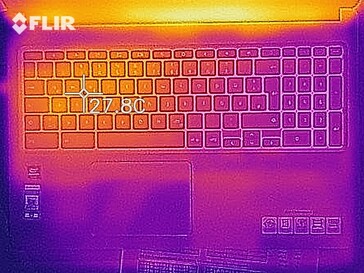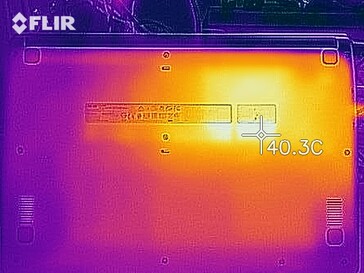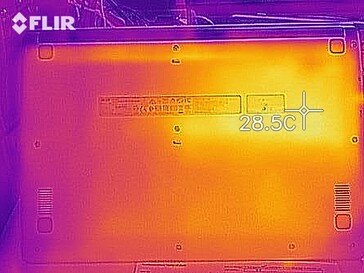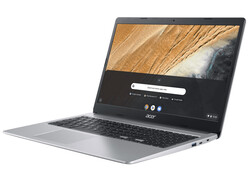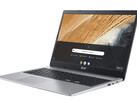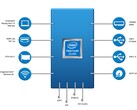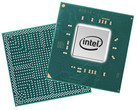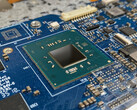Acer Chromebook 315 CB315-3HT Review: Silent Good-Looking ChromeBook Sports Good Battery Life

Acer’s Chromebook 315 CB315-3HT series consists of a number of thin 15.6-inch Chromebooks powered by Intel Gemini Lake processors. Today’s review unit is powered by a Pentium Silver N5030 CPU, and is the current high-end model within this series. At at around 480 Euros at the time of writing it is also the most expensive one. Its competitors are devices such as the HP 250 G7, Asus Vivobook 15 F512DA, or Lenovo Ideapad S145-15API.
Rating | Date | Model | Weight | Height | Size | Resolution | Best Price |
|---|---|---|---|---|---|---|---|
| 80.7 % | 12/2020 | Acer Chromebook 15 CB315-3HT-P297 Pentium N5030, UHD Graphics 605 | 1.9 kg | 20.3 mm | 15.60" | 1920x1080 | |
| 75.4 % | 09/2020 | HP 250 G7-15S40ES i5-1035G1, GeForce MX110 | 1.8 kg | 22.5 mm | 15.60" | 1920x1080 | |
| 73.1 % | 04/2020 | Asus Vivobook 15 F512DA-SH31 R3 3200U, Vega 3 | 1.8 kg | 19.9 mm | 15.60" | 1920x1080 | |
| 75.8 % | 01/2020 | Lenovo Ideapad S145-15API 81UT002XGE Athlon 300U, Vega 3 | 1.9 kg | 19.9 mm | 15.60" | 1366x768 |
Case & Connectivity – Chromebook supports Power Delivery
Acer’s Chromebook features a good-looking thin plastic case clad in silver-gray (display lid, base unit top shell, bottom shell) and black (display bezels). The gaps are consistent, and we found no evidence of sharp edges. The base unit is too easy to twist and warp. The maximum opening angle is 180 degrees. The battery is not user replaceable. The bottom cover needs to be removed in order to access the internal hardware.
All four USB ports (2x Type-A, 2x Type-C) support USB 3.2 Gen 1, with both USB-C ports supporting Power Delivery as well. Thus, the included USB-C power supply can power the device on both ports. In addition, the right-hand USB-C port also carries a DisplayPort signal.
The built-in microSD card reader performed comparatively poorly when benchmarked with our usual 64 GB Toshiba Exceria Pro M501 microSDXC reference card and peaked at just 34 MB/s when transferring 250 JPEG files with a size of around 5 MB each. The Intel Wireless-AC 9560 Wi-Fi modem supports 802.11 a/b/g/n/ac as well as Bluetooth 5.0.
Connectivity
| SD Card Reader | |
| average JPG Copy Test (av. of 3 runs) | |
| Average of class Office (8 - 82.7, n=49, last 2 years) | |
| Asus Vivobook 15 F512DA-SH31 (Toshiba Exceria Pro M501 64 GB UHS-II) | |
| HP 250 G7-15S40ES (Toshiba Exceria Pro SDXC 64 GB UHS-II) | |
| Acer Chromebook 15 CB315-3HT-P297 (Toshiba Exceria Pro M501 microSDXC 64GB) | |
| Lenovo Ideapad S145-15API 81UT002XGE (Toshiba Exceria Pro SDXC 64 GB UHS-II) | |
| maximum AS SSD Seq Read Test (1GB) | |
| Average of class Office (25 - 90.5, n=43, last 2 years) | |
| Asus Vivobook 15 F512DA-SH31 (Toshiba Exceria Pro M501 64 GB UHS-II) | |
| Lenovo Ideapad S145-15API 81UT002XGE (Toshiba Exceria Pro SDXC 64 GB UHS-II) | |
| HP 250 G7-15S40ES (Toshiba Exceria Pro SDXC 64 GB UHS-II) | |
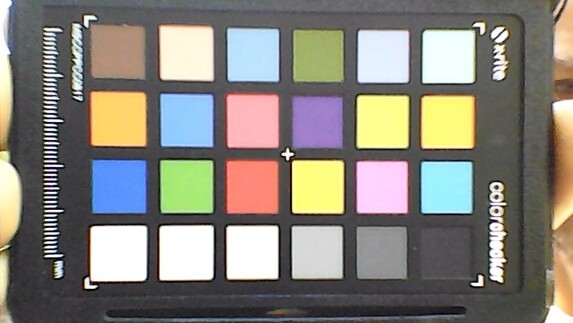
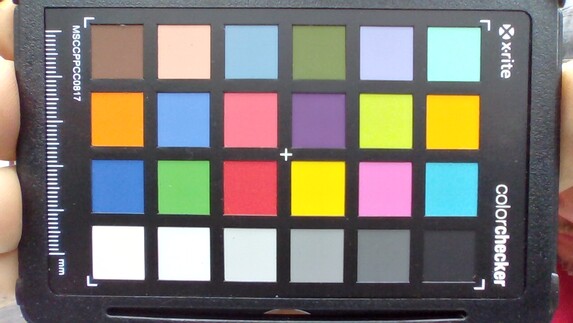
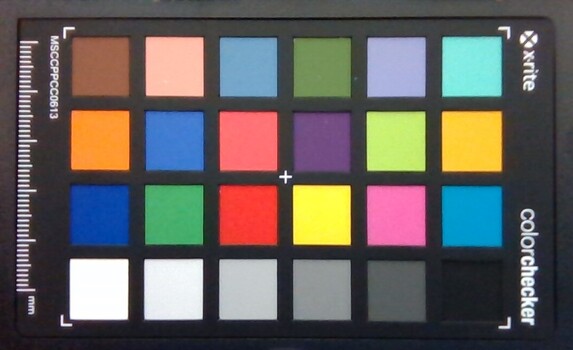
Input Devices – No Keyboard Backlight
The CB315 comes with a non-backlit chiclet keyboard with numpad. The slightly roughened keys offer short travel and a well-defined accentuation point. The keyboard barely flexed when typing, which turned out to be no big deal. All in all, the keyboard is well suitable for everyday use. The multitouch-capable Clickpad’s (10.6 x 7.8 cm / 4.2 x 3.1 inches) smooth surface allowed for comfortable finger gliding. It registered input up to its very edges. The clickpad features short travel and a clear accentuation point. The touchscreen supports 10-point multitouch and responded very quickly to input. It did not cause any issues.
Display – IPS Included
While the low-reflection 15.6-inch touchscreen display offered a decent contrast ratio of 1,470:1 its brightness was simply too low at just 228.9 nits. We consider brightness levels of 300 nits or more to be decent.
The display flickered at a frequency of 250 Hz, which could lead to headaches or sore eyes in sensitive users.
| |||||||||||||||||||||||||
Brightness Distribution: 78 %
Center on Battery: 272 cd/m²
Contrast: 1470:1 (Black: 0.185 cd/m²)
ΔE Color 4.44 | 0.5-29.43 Ø5
ΔE Greyscale 2.2 | 0.57-98 Ø5.3
Gamma: 2.44
| Acer Chromebook 15 CB315-3HT-P297 IPS, 1920x1080, 15.60 | HP 250 G7-15S40ES BOE BOE0687, TN LED, 1920x1080, 15.60 | Asus Vivobook 15 F512DA-SH31 AU Optronics B156HAN02.1, IPS, 1920x1080, 15.60 | Lenovo Ideapad S145-15API 81UT002XGE BOE CQ NT156WHM-N44, TN LED, 1366x768, 15.60 | |
|---|---|---|---|---|
| Display | ||||
| Display P3 Coverage | 38.64 | 38.71 | 36.8 | |
| sRGB Coverage | 58.2 | 58.2 | 55.4 | |
| AdobeRGB 1998 Coverage | 39.93 | 40 | 38.02 | |
| Response Times | 623% | -52% | -36% | |
| Response Time Grey 50% / Grey 80% * | 20 ? | 38 ? -90% | 36 ? -80% | 43 ? -115% |
| Response Time Black / White * | 24 ? | 10 ? 58% | 29.6 ? -23% | 17 ? 29% |
| PWM Frequency | 250 | 5000 ? 1900% | 192 ? -23% | |
| Screen | -130% | -68% | -142% | |
| Brightness middle | 272 | 178 -35% | 252.8 -7% | 218 -20% |
| Brightness | 229 | 174 -24% | 237 3% | 207 -10% |
| Brightness Distribution | 78 | 82 5% | 89 14% | 80 3% |
| Black Level * | 0.185 | 0.41 -122% | 0.86 -365% | 0.645 -249% |
| Contrast | 1470 | 434 -70% | 294 -80% | 338 -77% |
| Colorchecker dE 2000 * | 4.44 | 12.66 -185% | 4.83 -9% | 12.12 -173% |
| Colorchecker dE 2000 max. * | 18.84 | 22.77 -21% | 16.38 13% | 23.06 -22% |
| Greyscale dE 2000 * | 2.2 | 15.05 -584% | 4.6 -109% | 15.09 -586% |
| Gamma | 2.44 90% | 2.63 84% | 2.34 94% | 2.32 95% |
| CCT | 6448 101% | 20050 32% | 6841 95% | 18082 36% |
| Colorchecker dE 2000 calibrated * | 4.36 | 3.78 | 3.53 | |
| Color Space (Percent of AdobeRGB 1998) | 37 | 36.9 | 35 | |
| Color Space (Percent of sRGB) | 58 | 58.1 | 55 | |
| Total Average (Program / Settings) | 247% /
76% | -60% /
-64% | -89% /
-113% |
* ... smaller is better
Display Response Times
| ↔ Response Time Black to White | ||
|---|---|---|
| 24 ms ... rise ↗ and fall ↘ combined | ↗ 14 ms rise | |
| ↘ 10 ms fall | ||
| The screen shows good response rates in our tests, but may be too slow for competitive gamers. In comparison, all tested devices range from 0.1 (minimum) to 240 (maximum) ms. » 48 % of all devices are better. This means that the measured response time is worse than the average of all tested devices (21.5 ms). | ||
| ↔ Response Time 50% Grey to 80% Grey | ||
| 20 ms ... rise ↗ and fall ↘ combined | ↗ 2 ms rise | |
| ↘ 18 ms fall | ||
| The screen shows good response rates in our tests, but may be too slow for competitive gamers. In comparison, all tested devices range from 0.2 (minimum) to 636 (maximum) ms. » 27 % of all devices are better. This means that the measured response time is better than the average of all tested devices (33.7 ms). | ||
Screen Flickering / PWM (Pulse-Width Modulation)
| Screen flickering / PWM detected | 250 Hz | ||
The display backlight flickers at 250 Hz (worst case, e.g., utilizing PWM) . The frequency of 250 Hz is relatively low, so sensitive users will likely notice flickering and experience eyestrain at the stated brightness setting and below. In comparison: 53 % of all tested devices do not use PWM to dim the display. If PWM was detected, an average of 17900 (minimum: 5 - maximum: 3846000) Hz was measured. | |||
Performance – CB315 with Gemini Lake Refresh
Acer’s Chromebook 315 is a 15.6-inch Chromebook. At the time of writing our review unit sold for around 480 Euros and was thus the most expensive model within this series. Other SKUs are also available.
Processor
The Chromebook features a Pentium Silver N5030 quad-core processor (Gemini Lake Refresh). Thanks to its low TDP of just 6 W the SoC can be cooled passively. The CPU runs at a base clock speed of 1.1 GHz and can turbo boost up to 2.6 GHz (four cores) or even 3.1 GHz (one core).
Acer’s website as well as many online shops list the Pentium Silver N5000 as processor built into our particular SKU. However, the CB315 features the N5030. The only difference between the two are a 400 MHz higher single-core turbo-boost speed on the latter.
| WebXPRT 3 - Overall | |
| Average of class Office (99.2 - 368, n=107, last 2 years) | |
| HP 250 G7-15S40ES (Chrome 82) | |
| Lenovo Ideapad S145-15API 81UT002XGE (Edge 44) | |
| Asus Vivobook 15 F512DA-SH31 (Chrome 82) | |
| Acer Chromebook 15 CB315-3HT-P297 (Chrome 87.0.4280.88) | |
| Average Intel Pentium Silver N5030 (91.3 - 116, n=3) | |
| Mozilla Kraken 1.1 - Total | |
| Average Intel Pentium Silver N5030 (1914 - 3145, n=3) | |
| Acer Chromebook 15 CB315-3HT-P297 (Chrome 87.0.4280.88) | |
| Lenovo Ideapad S145-15API 81UT002XGE (Edge 44) | |
| Asus Vivobook 15 F512DA-SH31 (Chrome 82) | |
| HP 250 G7-15S40ES (Chrome 82) | |
| Average of class Office (479 - 1966, n=112, last 2 years) | |
| Octane V2 - Total Score | |
| Average of class Office (21416 - 93596, n=52, last 2 years) | |
| Lenovo Ideapad S145-15API 81UT002XGE (Edge 44) | |
| Average Intel Pentium Silver N5030 (21894 - 21904, n=2) | |
| Acer Chromebook 15 CB315-3HT-P297 (Chrome 87.0.4280.88) | |
| Speedometer 2.0 - Result | |
| Average of class Office (26.1 - 350, n=48, last 2 years) | |
| Acer Chromebook 15 CB315-3HT-P297 (Chrome 87.0.4280.88) | |
| Average Intel Pentium Silver N5030 (58.7 - 59.9, n=2) | |
| Lenovo Ideapad S145-15API 81UT002XGE (Edge 44) | |
| JetStream 1.1 - Total Score | |
| Average of class Office (117.1 - 544, n=18, last 2 years) | |
| Lenovo Ideapad S145-15API 81UT002XGE (Edge 44) | |
| Asus Vivobook 15 F512DA-SH31 (Edge 44.17763.831.0) | |
| Average Intel Pentium Silver N5030 (110.3 - 117.6, n=2) | |
| Acer Chromebook 15 CB315-3HT-P297 (Chrome 87.0.4280.88) | |
* ... smaller is better
System Performance
The system performed well and smoothly overall. We did not encounter any issues. The processor is fast enough for office and internet applications. The operating system boots quickly and applications load times are short.
| Acer Chromebook 15 CB315-3HT-P297 UHD Graphics 605, Pentium N5030, 128 GB eMMC Flash | Average Intel Pentium Silver N5030, Intel UHD Graphics 605 | Average of class Office | |
|---|---|---|---|
| PCMark for Android | 0% | ||
| Computer Vision score | 8984 | 8984 ? 0% | |
| Storage score | 31170 | 31170 ? 0% | |
| Work 2.0 performance score | 9447 | 9447 ? 0% | |
| Work performance score | 13200 | 13200 ? 0% |
Storage Devices
The main storage device is an eMMC module with a capacity of 128 GB. Storage space can be further expanded via microSD card.
GPU Performance
The built-in GPU is an Intel UHD Graphics 605, which sits at the lower end of the performance spectrum. It features a built-in hardware decoder for decoding common video formats, such as H.264 or HEVC/H.265. Streaming services are thus no real challenge for this device.
| 3DMark Sling Shot Extreme (ES 3.1) Unlimited | 1628 points | |
Help | ||
| 3DMark - 1280x720 offscreen Ice Storm Unlimited Graphics Score | |
| Average of class Office (52786 - 346858, n=10, last 2 years) | |
| HP 250 G7-15S40ES | |
| Asus Vivobook 15 F512DA-SH31 | |
| Lenovo Ideapad S145-15API 81UT002XGE | |
| Average Intel UHD Graphics 605 (32770 - 55453, n=9) | |
| Acer Chromebook 15 CB315-3HT-P297 | |
| GFXBench (DX / GLBenchmark) 2.7 | |
| 1920x1080 T-Rex Offscreen | |
| Average of class Office (38 - 210, n=4, last 2 years) | |
| Average Intel UHD Graphics 605 (32 - 51.9, n=3) | |
| Acer Chromebook 15 CB315-3HT-P297 | |
| T-Rex Onscreen | |
| Average of class Office (35 - 58, n=4, last 2 years) | |
| Average Intel UHD Graphics 605 (24 - 67.5, n=3) | |
| Acer Chromebook 15 CB315-3HT-P297 | |
| GFXBench 3.0 | |
| 1920x1080 1080p Manhattan Offscreen | |
| Average Intel UHD Graphics 605 (16 - 33.4, n=3) | |
| Average of class Office (18 - 24, n=3, last 2 years) | |
| Acer Chromebook 15 CB315-3HT-P297 | |
| on screen Manhattan Onscreen OGL | |
| Average of class Office (23 - 49, n=3, last 2 years) | |
| Average Intel UHD Graphics 605 (14 - 42.2, n=3) | |
| Acer Chromebook 15 CB315-3HT-P297 | |
| GFXBench 3.1 | |
| 1920x1080 Manhattan ES 3.1 Offscreen | |
| Average of class Office (8.2 - 85, n=4, last 2 years) | |
| Average Intel UHD Graphics 605 (13 - 23.3, n=3) | |
| Acer Chromebook 15 CB315-3HT-P297 | |
| on screen Manhattan ES 3.1 Onscreen | |
| Average of class Office (15 - 59, n=4, last 2 years) | |
| Average Intel UHD Graphics 605 (11 - 35.5, n=3) | |
| Acer Chromebook 15 CB315-3HT-P297 | |
Emissions & Energy – Silent and Persevering
Noise Emissions
The CB315 is cooled passively and lacks a mechanical drive. It is thus completely silent.
Temperature
Acer’s Chromebook does not really get warm at all. Under load (Octane V2 and Jetstream benchmarks in a loop) it warmed up to slightly more than 30 °C in some spots. Idle temperatures were much lower.
(+) The maximum temperature on the upper side is 32.5 °C / 91 F, compared to the average of 34.2 °C / 94 F, ranging from 21.2 to 62.5 °C for the class Office.
(+) The bottom heats up to a maximum of 32.3 °C / 90 F, compared to the average of 36.7 °C / 98 F
(+) In idle usage, the average temperature for the upper side is 22.6 °C / 73 F, compared to the device average of 29.5 °C / 85 F.
(+) The palmrests and touchpad are cooler than skin temperature with a maximum of 24 °C / 75.2 F and are therefore cool to the touch.
(+) The average temperature of the palmrest area of similar devices was 27.7 °C / 81.9 F (+3.7 °C / 6.7 F).
Speakers
The stereo speakers sit at the front bottom of the device. They produce a decent soundscape with almost no bass. Headphones or external speakers will make for a much more enjoyable audio experience.
Acer Chromebook 15 CB315-3HT-P297 audio analysis
(±) | speaker loudness is average but good (79.8 dB)
Bass 100 - 315 Hz
(-) | nearly no bass - on average 37.6% lower than median
(±) | linearity of bass is average (11.4% delta to prev. frequency)
Mids 400 - 2000 Hz
(±) | reduced mids - on average 6% lower than median
(±) | linearity of mids is average (7.6% delta to prev. frequency)
Highs 2 - 16 kHz
(±) | higher highs - on average 6% higher than median
(+) | highs are linear (5.8% delta to prev. frequency)
Overall 100 - 16.000 Hz
(±) | linearity of overall sound is average (24.4% difference to median)
Compared to same class
» 68% of all tested devices in this class were better, 9% similar, 23% worse
» The best had a delta of 7%, average was 22%, worst was 53%
Compared to all devices tested
» 70% of all tested devices were better, 6% similar, 24% worse
» The best had a delta of 4%, average was 25%, worst was 134%
Power Consumption
We found no power consumption inconsistencies with Acer’s Chromebook. Idle power consumption peaked at just 6.6 W. Power consumption under load can get up to 16.6 W. The USB-C power supply is rated at 45 W.
| Off / Standby | |
| Idle | |
| Load |
|
Battery Life
We use our real-world Wi-Fi test simulating typical load while browsing the web via a script to assess battery life. All power saving features are disabled, and display brightness is normalized to 150 nits. In this test and under these conditions the Chromebook 315 lasted for 10:18 hours.
Pros
Cons
Verdict
Acer’s Chromebook is well-suited for all possible Chromebook use cases thanks to its combination of Pentium Silver N5030, 8 GB of RAM, and 128 GB of storage. The passively cooled CPU makes for a silent mode of operation, which renders the device very well usable in quiet environments.
Acer’s Chromebook 315 CB315-3HT is a well-made all-round decent Chrome OS device.
On a single charge, the CB315 will last for more than 10 hours in our Wi-Fi test. It is charged via a USB-C power supply, which can be plugged into either of the two available USB-C ports.
Thanks to the integration of Google’s Play Store the Chromebook can run numerous Android apps. Internet access is provided by an ac-Wi-Fi module with two antennas. The keyboard lacks a backlight but turned out to be well suited for everyday use otherwise.
The FHD IPS touchscreen display offers a decent anti-glare coating, wide viewing angles, decent colors, and a good contrast ratio. Its maximum brightness is too low. Whether or not a touchscreen is really necessary on a device like the CB315 remains to be seen. We would have preferred a keyboard backlight instead.
Acer Chromebook 15 CB315-3HT-P297
-
12/10/2020 v7
Sascha Mölck


 Deutsch
Deutsch English
English Español
Español Français
Français Italiano
Italiano Nederlands
Nederlands Polski
Polski Português
Português Русский
Русский Türkçe
Türkçe Svenska
Svenska Chinese
Chinese Magyar
Magyar